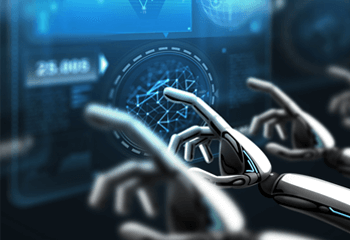 Digital twin created of all buildings in the US for environmental researchRecently, researchers in the US developed a digital twin of all buildings in the US to help develop energy solutions to reduce CO2 emissions. What is a digital twin, how did the researchers achieve a digital twin of the US, and where could this technology go?
Digital twin created of all buildings in the US for environmental researchRecently, researchers in the US developed a digital twin of all buildings in the US to help develop energy solutions to reduce CO2 emissions. What is a digital twin, how did the researchers achieve a digital twin of the US, and where could this technology go?What is a “digital twin”?
The term “digital twin” refers to a digital model of a real process, device, or system. While a digital twin may appear to be a simulation, it is somewhat different in that not only does it operate in real-time, it simulates events in a realistic way such that unexpected outcomes and responses can be explored.
Another way to describe a digital twin is to look at a simplified example; a diesel generator. A simulation would have a series of equations that describe the relationship between RPM and energy output. A digital twin would model the generator as the sum of all its components. The twin can then be interacted with in real-time to see the behaviour of the generator. For example, increasing the RPM would see the output energy increase. However, at the same time, the mechanical effects of the generator would also be present, which could result in violent shaking.
Digital twins are incredibly beneficial when trying to understand how a process will behave when making changes. This type of insight makes digital twins especially advantageous when dealing with training operators on equipment and processes as they have the freedom to explore different decisions.
Researchers create a digital twin of all buildings in the US
Recently, researchers from Oak Ridge National Laboratory have created a system that can model and simulate energy properties of all buildings in the United States. The Automatic Building Energy Modeling system gathers publicly available data such as street view, LiDAR, maps, and energy readings to create energy models of each building. Furthermore, the model can determine window locations, ventilation systems, and the type of roof used to help improve the accuracy of the energy model.
Once the digital twins of each building are produced, the AutoBEM system can then predict which combination of eco-friendly technologies will help to minimise that buildings carbon footprint. Such experimented with and explored technologies include solar panels, heat pumps, smart thermostats, and energy-efficient water heaters.
Considering that 40% of the total energy in the US is consumed by buildings, identifying buildings that are high energy consumers could help reduce the overall energy consumption. This would reduce the total CO2 production and thereby provide a method for combatting climate change.
https://www.civilengineering.ai/digital-twin-created-of-all-buildings-in-the-us-for-environmental-research/

Post a Comment